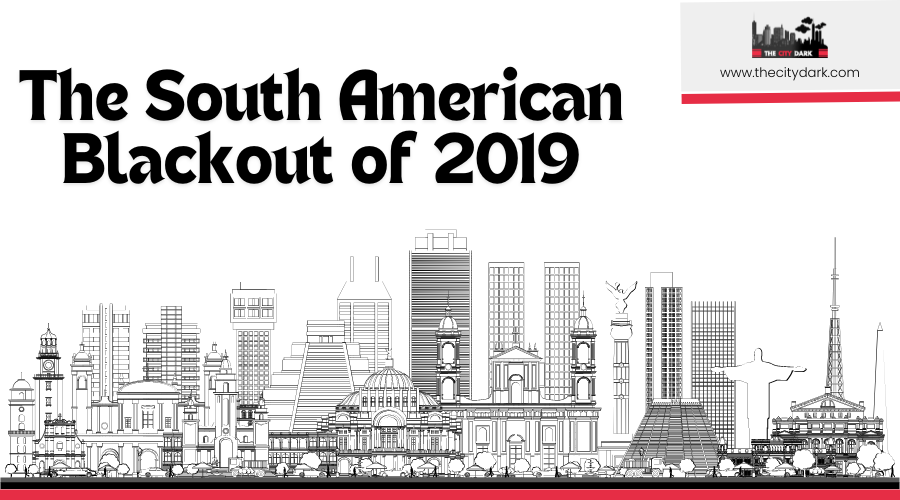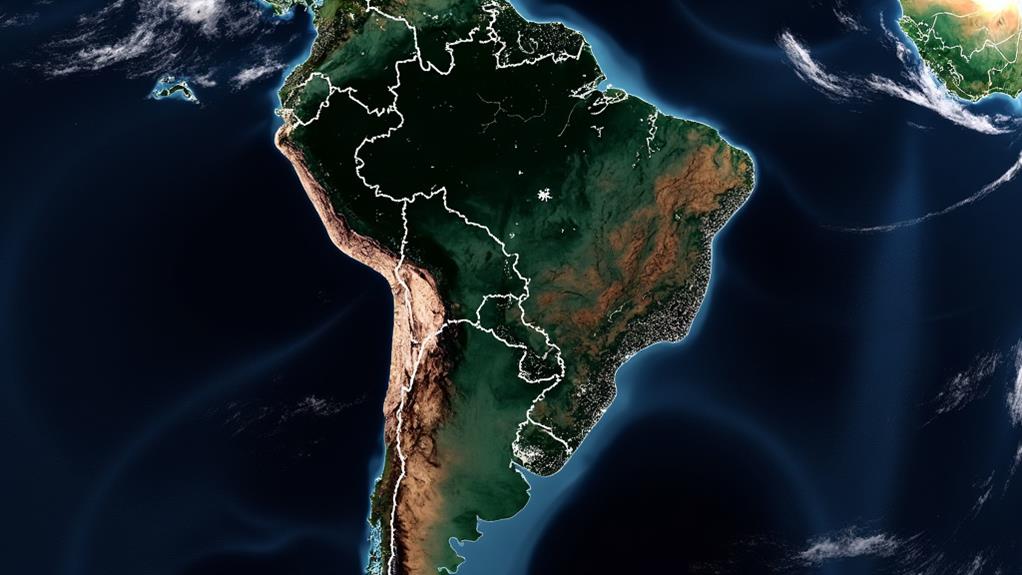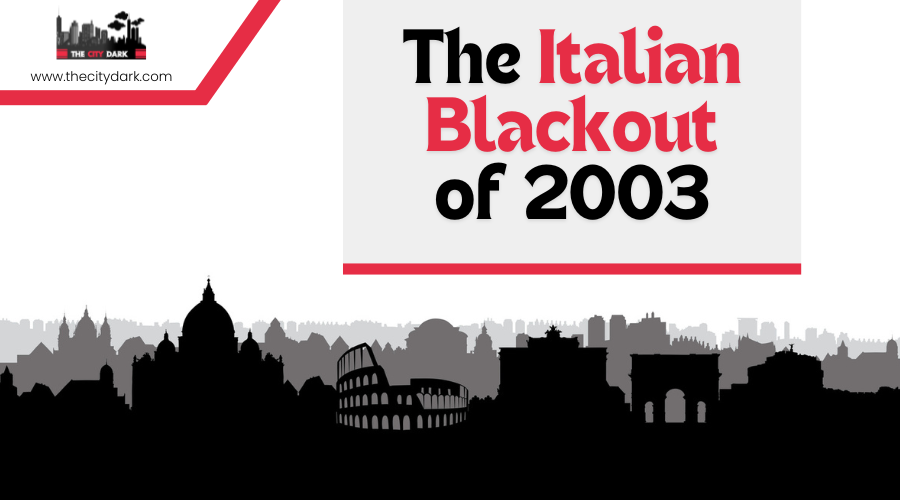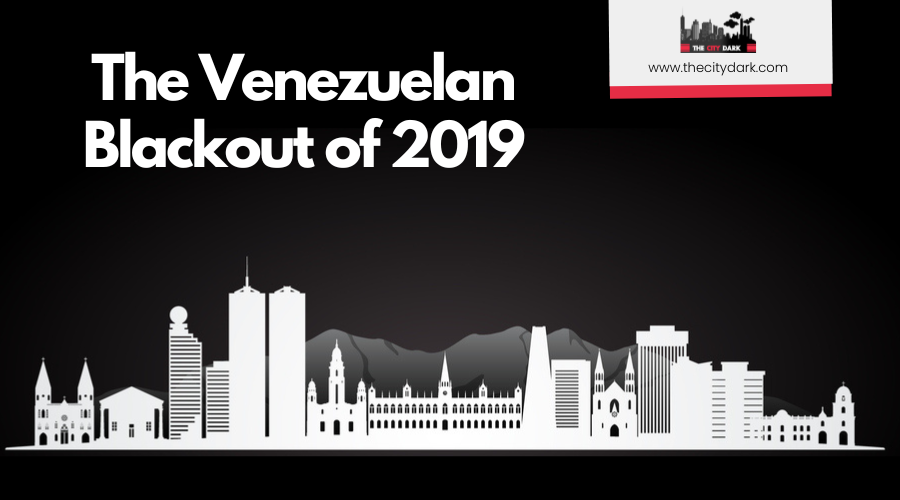The South American Blackout of 2019

Imagine waking up one Sunday morning to find an unexpected blackout sweeping across three countries, affecting millions of lives. This is exactly what happened on June 16, 2019, in Argentina, Uruguay, and parts of Paraguay. Triggered by a transmission issue in a high-voltage circuit, this massive power failure disrupted daily routines, halted transportation, and left many in the dark on Father's Day. How did such a widespread outage occur, and what were the immediate and long-term responses? Let's explore the sequence of events and the critical lessons learned from this unprecedented blackout.
Overview of the Blackout
Imagine waking up to an entire region plunged into darkness. On June 16, 2019, approximately 48 million people across Argentina, Uruguay, and parts of Paraguay experienced a massive blackout. This unprecedented power outage, one of the largest in South American history, began around 7 a.m. local time. The primary cause was a transmission failure in a 500kV circuit from Colonia Elía to Buenos Aires, leading to widespread power loss and chaos.
Argentine President Mauricio Macri described the event as unprecedented and called for an immediate investigation. The blackout highlighted the vulnerabilities within South America's interconnected power grids, exposing the system's fragility. Crucial services and daily life were significantly disrupted, with many areas remaining without electricity for several hours.
Timeline of Events
The blackout's impact was immediate and extensive, compelling authorities to rapidly compile a timeline to comprehend the scope and sequence of the outage. On June 16, 2019, at around 7:07 a.m. local time, a massive power outage hit Argentina, Uruguay, and parts of Paraguay, plunging tens of millions into darkness. The primary cause was identified as a fault in a 500kV circuit from Colonia Elía to Buenos Aires, leading to the collapse of the Argentine Interconnection System.
Authorities promptly launched an official investigation to pinpoint the precise causes and contributing factors of the blackout. The event was unprecedented, as emphasized by Argentine President Mauricio Macri, revealing systemic operational and design flaws within the region's energy infrastructure.
Throughout the day, restoration efforts were ongoing. By the evening of June 16, power was restored to 98% of Argentina and approximately 75% of Uruguay. While full restoration was still underway, the rapid response underscored a concerted effort to mitigate the blackout's effects. The timeline highlighted the urgency and scale of the crisis, emphasizing the need for improved infrastructure and safeguards.
Affected Regions

On June 16, 2019, a massive blackout disrupted life across Argentina, Uruguay, and parts of Paraguay, affecting approximately 48 million people. In Argentina, nearly the entire country experienced a sudden cessation of daily activities, while Uruguay also faced significant challenges as the entire nation lost power. Paraguay saw considerable regions plunged into darkness, though the impact was somewhat less severe compared to its neighbors.
Despite the widespread nature of the blackout, the effects were not uniform across all areas. The Tierra del Fuego province in Argentina remained unaffected due to its isolation from the main power grid. Meanwhile, southern Brazil and Chile experienced brief disruptions but quickly resumed normal operations later in the day.
By the evening of June 16, significant progress had been made in restoring power:
- Argentina: 98% of the country had electricity restored.
- Uruguay: 75% of the nation regained power.
- Paraguay: While specific metrics are unclear, substantial restoration efforts were underway.
- Tierra del Fuego: Remained unaffected throughout the event.
The extensive and urgent power restoration efforts highlighted the resilience of the affected regions in responding to this unprecedented crisis.
Immediate Impact
On June 16, 2019, a massive power outage disrupted daily life for millions across Argentina, Uruguay, and Paraguay. The blackout left tens of millions without electricity, causing immediate and widespread impact. In Buenos Aires, Argentina's vibrant capital, transportation systems came to a standstill. Subways stopped, and traffic lights went dark, leading to severe traffic congestion and commuter chaos.
Hospitals issued urgent advisories, urging patients dependent on home medical equipment to seek care in facilities with backup generators. Businesses were forced to close, disrupting economic activities and making daily commerce nearly impossible. Citizens were also advised to conserve water due to electric pump failures affecting distribution systems.
The blackout's timing on Father's Day, typically a day of family gatherings, added to public frustration and underscored the vulnerability of the region's infrastructure. The incident highlighted the critical importance of reliable electricity for modern life, impacting everything from healthcare to daily commuting.
Response and Restoration
In the wake of the blackout, crisis management teams were swiftly activated to restore power and address immediate concerns. Both Argentina and Uruguay launched investigations to identify the root cause and hold responsible parties accountable. Clear public communication was crucial, with authorities regularly updating citizens on progress and safety measures.
Crisis Management Activation
The rapid activation of crisis management teams demonstrated the effectiveness of South America's emergency response mechanisms during the blackout that struck on June 16, 2019. National response teams were immediately mobilized. In Argentina, Edesur and Edenor led the restoration efforts, successfully restoring power to 98% of users within hours. Meanwhile, Uruguay's government efficiently redirected energy from the Itaipu hydroelectric plant through UTE, restoring electricity to most citizens by early afternoon.
Public communication was crucial. Energy companies and government officials provided continuous updates, ensuring the public was informed about the restoration process and the steps being taken. This rapid, coordinated response underscores the significant role of crisis management in mitigating the effects of such a widespread blackout.
Key actions taken included:
- Immediate Activation of National Response Teams: Quickly mobilized to manage the crisis.
- Efficient Restoration Efforts: Edesur and Edenor restored power to 98% of Argentina's users within hours.
- Energy Redirection by UTE: Allowed most of Uruguay to regain electricity by early afternoon.
- Effective Public Communication: Kept citizens informed about the situation and progress.
These actions highlight the importance of crisis management in energy restoration and the subsequent investigations to prevent future occurrences.
Investigation and Accountability
Following the rapid response to the blackout, attention quickly shifted to uncovering the root causes and ensuring accountability. The Argentine government launched an investigation to identify systemic operational and design flaws within the country's energy infrastructure. This comprehensive investigation is crucial for preventing future blackouts and restoring public trust.
Utility companies, Edesur and Edenor, led substantial restoration efforts, successfully re-establishing power to approximately 98% of Argentina by the evening of June 16, 2019. Despite these efforts, the Ente Nacional Regulador de la Electricidad (ENRE) announced plans to impose significant fines on Transener, potentially up to 10% of the company's annual earnings. These fines highlight the importance of accountability in the energy sector and act as a deterrent against future negligence.
Energy Secretary Gustavo Lopetegui ruled out a cyberattack as the cause, emphasizing that ongoing investigations would provide further clarity. Compensation measures for affected users were also discussed, proposing uniform credits regardless of individual outage durations. This approach aims to address public grievances fairly and uniformly.
Public Communication Efforts
Public communication efforts were pivotal in managing the aftermath of the blackout on June 16, 2019. Energy companies Edesur and Edenor provided citizens with continuous updates about power restoration and the cause of the outage. Argentine President Mauricio Macri stressed the importance of transparency and committed to a thorough investigation of the unprecedented event, which left tens of millions without electricity.
Updates were disseminated through various media channels, detailing the progress of restoration efforts. By the evening of the blackout, 98% of Argentine households had regained power. Social media platforms served as a vital tool for citizens to share their experiences and voice their concerns, capturing the widespread public sentiment during the crisis.
Authorities also mobilized emergency services and issued safety tips to the public, advising residents on how to cope with the disruption, such as conserving water and using emergency lighting.
To summarize the public communication efforts:
- Timely updates: Continuous updates on power restoration and causes of the blackout.
- Transparency: President Macri's commitment to a thorough investigation.
- Social media engagement: Citizens used social media to share experiences and concerns.
- Emergency advisories: Authorities provided safety tips and mobilized emergency services.
Government Actions
During the South American Blackout of 2019, Argentina's government promptly activated national response teams to manage the crisis and restore power. These teams collaborated closely with energy companies to ensure efficient power restoration. The government also immediately initiated investigations to identify the root causes of the blackout. Both Edesur and government officials pinpointed systemic operational and design flaws within the energy infrastructure that contributed to the widespread outage.
As a result of these findings, the Ente Nacional Regulador de la Electricidad (ENRE) announced plans to impose significant fines on Transener, a major entity in the energy sector. These fines could total up to 10% of the company's annual earnings, demonstrating the government's commitment to accountability.
Additionally, the government considered implementing compensation credits for affected users. Although these credits were uniform and not based on the duration of individual outages, they represented an effort to address public grievances. Public communication was also enhanced, with officials providing regular updates on restoration efforts and ongoing investigations.
Media Coverage

Major news outlets, including the Associated Press, described the blackout as unprecedented, impacting millions across Argentina, Uruguay, and Paraguay. Social media became a hub for real-time reactions, with people sharing their experiences and concerns. International coverage underscored the disruption to essential services and highlighted the broader vulnerabilities in South America's electrical infrastructure.
Major News Outlets' Reports
Major news outlets swiftly reported on the South American blackout of June 16, 2019, which left approximately 48 million people in darkness across Argentina, Uruguay, and Paraguay. This unprecedented power failure exposed significant vulnerabilities in Argentina's energy infrastructure. The Associated Press highlighted the blackout's extensive impact, disrupting critical services such as transportation and healthcare.
Coverage focused on the immediate restoration efforts. By the evening of June 16, power had been restored to 98% of Argentina and 75% of Uruguay. Reports detailed the government's swift response, including investigations launched by Edesur and the Argentine government to identify the causes and potential operational errors in the energy system.
Key points emphasized by major news outlets included:
- Scale of Impact: Tens of millions affected, critical services disrupted.
- Restoration Efforts: Power restored to most areas by evening.
- Government Response: Investigations initiated by Edesur and the Argentine government.
- International Attention: Comparisons to blackouts in Venezuela and Brazil.
These reports highlighted concerns about the interconnected power grids in South America and underscored the urgent need for infrastructure improvements to prevent future blackouts.
Social Media Reactions
During the South American blackout on June 16, 2019, social media platforms were abuzz as users shared their experiences and frustrations. Posts, tweets, and stories surged, capturing the blackout's immediate impact on daily life. Concerns about public safety, particularly the absence of street lighting, were prevalent, alongside practical tips for coping, such as using cellphone flashlights and conserving water.
Frustration was widespread regarding the lack of preparedness and infrastructure vulnerabilities. Comparisons to recent blackouts in Venezuela highlighted broader energy instability in the region. Social media reactions ranged from confusion and fear to solidarity and support. Users criticized energy companies and government officials, demanding accountability and improved infrastructure to prevent future occurrences.
Despite the chaos, a sense of community emerged online, with people offering help and sharing updates. The blackout exposed infrastructure weaknesses but also demonstrated social media's power in uniting people during crises.
International Press Coverage
As social media buzzed with real-time reactions, international press quickly grasped the magnitude of the South American blackout. Major news outlets, including the Associated Press, highlighted the unprecedented scale, affecting approximately 48 million people across Argentina, Paraguay, and Uruguay on June 16, 2019. Coverage emphasized the immediate impact on daily life, with millions experiencing power loss, disruptions in essential services, and halted public transport, particularly in Buenos Aires.
The international media provided not only reports but also in-depth analysis, comparing the event to other global incidents. Parallels were drawn to the 2019 Venezuelan blackouts and the Manhattan blackout of July 2019, underscoring global vulnerabilities in energy infrastructure. Statements from Argentine President Mauricio Macri, who labeled the event as unprecedented and called for an official investigation, were widely quoted.
Key points to understand the scope and impact include:
- Scale: 48 million people affected across three countries.
- Immediate Disruptions: Power loss, halted public transport, and disrupted services.
- Global Comparisons: Highlighting infrastructure vulnerabilities similar to other significant blackouts.
- Political Response: High-level calls for investigation and accountability.
This extensive coverage underscored the profound implications of the blackout on both regional and global energy discussions.
Long-term Consequences
The 2019 blackout in South America underscored the urgent need for significant upgrades to the region's energy infrastructure. The event highlighted glaring issues in energy security and the necessity for comprehensive infrastructure improvements. Systemic operational errors were revealed, prompting potential policy changes to enhance utility companies' preparedness and response strategies.
This incident also emphasized the importance of resilience planning. Strengthening safety measures and diversifying energy sources can help reduce dependency on a single power grid, making the system more robust against future outages. The blackout raised public awareness about these vulnerabilities, urging authorities to evaluate more proactive resilience measures.
Economic implications were another major consequence. The blackout spurred debates over energy pricing and subsidies, focusing on balancing affordable electricity rates with the need for substantial investment in reliable energy systems. The economic impact highlighted the critical link between energy reliability and economic stability. Discussions aimed at ensuring that future investments in the energy sector not only prevent similar incidents but also support long-term economic growth and stability in South America.
Lessons Learned

Reflecting on the long-term consequences of the 2019 South American blackout, several critical lessons emerged from this crisis. The event exposed the vulnerability of interconnected power grids, demonstrating how failures in one country can cascade across borders and disrupt millions of lives. This underscored the urgent need for systemic upgrades to address operational errors and improve energy infrastructure.
The blackout also highlighted the importance of resilience planning. Utility companies learned that effective emergency responses are essential for maintaining public safety and critical services during such crises. Public frustration during the incident revealed significant gaps in communication strategies, emphasizing the need for energy companies to keep citizens informed and reassured.
Lastly, the economic fallout underscored the necessity of diversified energy sources. Relying on a single system can lead to severe disruptions, impacting daily life and economic stability. Here are four key lessons:
- Understand the vulnerability of interconnected power grids.
- Prioritize resilience planning and preparedness.
- Improve communication strategies during crises.
- Invest in diversified energy sources.




